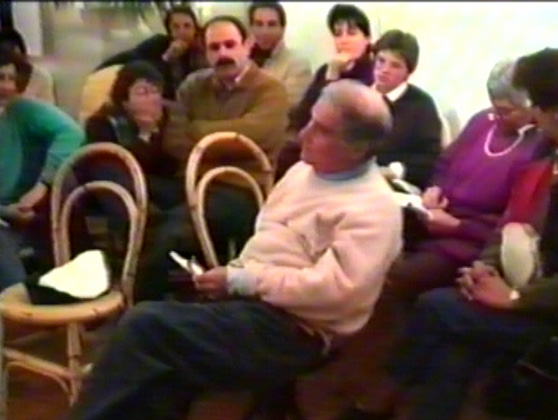|
Defusing Lava Bombs
Defusing Lava Bombs is the documentation on video of a conceptual art happening where, starting from an intervention in the open countryside, the course of the process of an essentially immaterial act is recorded after the fact. This process is comparable to early Land Art projects, even though the varied combination of video, posters and the happening itself takes a characteristic approach for the art of the 1990s. The artist has used a scientific system of categorisation to describe 24 special pieces of lava known as 'lava bombs' during a field trip to the Italian volcanic island of Stromboli. She noted the dimensions and weight of the stones and their outline on posters bearing the image of another 'lava bomb'. The stones were subsequently laid back where they had come from on the volcano; as documentation remained the written records on the posters. This use of scientific methodology was mixed with an artistic one to lend, in the process of their statistical definition, the stones the status of imaginary sculptures. This happens in an act of transformation that "returns their dignity as sculptural objects to the 'lava bombs'; the thorn of the name that the scientific approach gave them is removed" (Gertrude Moser-Wagner).
The documentation on video itself does not capture this process of defining sculptures, instead it shows an event that is a scientific-artistic co-production. In the video the artist is standing in front of a group of interested onlookers, introducing them to her work and explaining it. The event was held in the gallery 'Punto Rosso Arti Visive' on Stromboli. This was where the Italian initiator of the project, the curator Stefano Cervi, had invited a series of artists and scientists to come and learn more about one another's disciplines. Gertrude Moser-Wagner explains the background to her work in the video ? how she discovered a lava bomb by chance in the Vienna Naturhistorisches Museum in January 1991, the way she spontaneously decided to hold it in her hands for several minutes ? as a simple gesture that was documented in a photograph, which in turn provided the motif for the poster with the outline diagrams. Though she also demonstrated the practised way she handles the stone artefacts, and answered the audience's questions.
The piece is to be read before a background of the first Gulf War (1991) and a situation heightened by the media against which the project provided a "gesture of pacification". With this conceptual redefinition the 'bombs' could be transferred into an art context as sculptures and 'defused'. In terms of the history of video, it ought to be noted that interestingly here at the start of the 1990s state-of-the-art technology, software and equipment was employed quite playfully ? taking video as a medium away from the necessity to purely document, unambiguously defining the piece as also belonging to an aesthetic system.
(Patricia Grzonka translated by Jonathan Quinn) |





